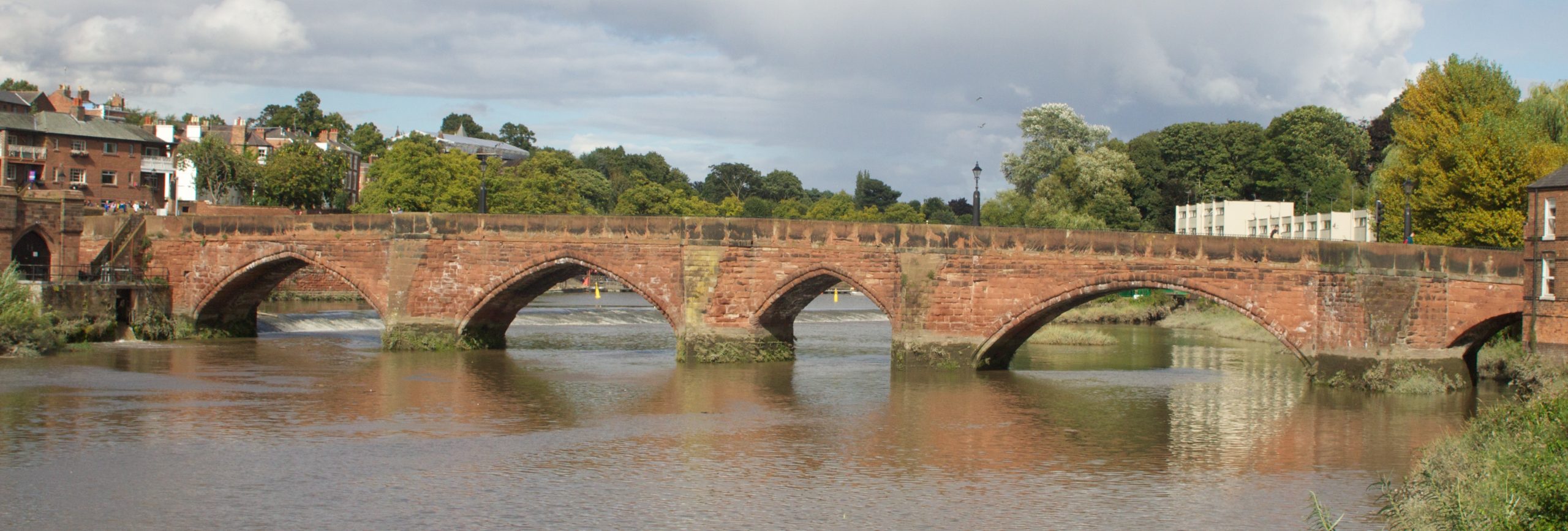The Old Dee Bridge in Chester, Cheshire, England, is the oldest bridge in the city. It crosses the River Dee carrying the road that leads from the bottom of Lower Bridge Street and the Bridgegate to Handbridge. A bridge on this site was first built in the Roman era, and the present bridge is largely the result of a major rebuilding in 1387. It is recorded in the National Heritage List for England as a designated Grade I listed building, and is a scheduled monument.
History
The bridge was built following a bequest of £20,000 by Bishop William Elphinstone who died in 1514. The bridge was completed by Bishop Gavin Dunbar. It was nearly all rebuilt between 1718 and 1723, and in 1841 was widened from 14 to 26 feet (from four to eight metres) under the direction of Aberdeen City Architect John Smith. Smith also designed the Shakkin’ Briggie, and worked on the Bridge of Don with Telford and Wellington Suspension Bridge with Captain Samuel Brown.
The bridge is located near the northern terminus of the Causey Mounth, a medieval drovers’ road connecting Stonehaven to Aberdeen. This ancient trackway specifically connected the Bridge of Dee via Bourtreebush, Muchalls Castle and Stonehaven to the south. The route was that taken by William Keith, 7th Earl Marischal and the Marquess of Montrose when they led a Covenanter army of 9000 men in the first battle of the Civil War in 1639.
Until 1832, this was the only access to the city from the south. The bridge still features the original 16th-century piers, coats of arms and passing places.
Discover more from LandmarkLocation.com
Subscribe to get the latest posts sent to your email.


